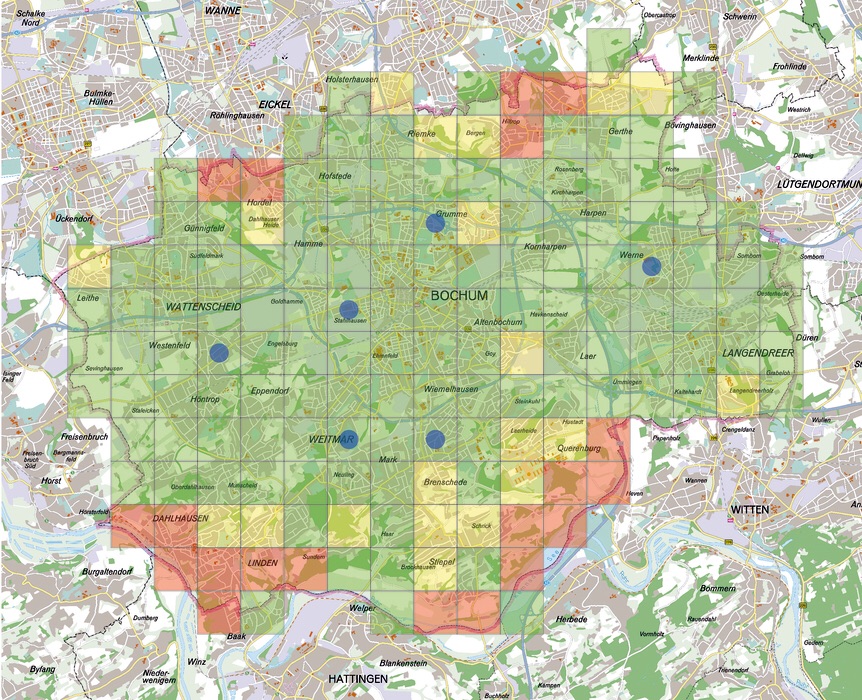GOVERNMENT
SuperComputations for faster arrival of ambulances

Only eight to ten minutes are permitted to pass before the emergency services have to arrive on scene and launch rescue operations – a challenge for emergency service planners. Where and when should emergency ambulances be positioned within a city to ensure that all locations across the urban area will be reached in good time? Together with the fire brigade, the Chair of Management, Operation Research and Accounting is helping to solve this complicated question with IT-based decision support.
City centre of Bochum is currently excessively covered
The project team based their work on existing data of emergency responses in the city of Bochum. The data, for instance, revealed that the peak time for emergency responses is between 10am and 2pm. Emergency calls are much more frequent on weekends and on Wednesdays than on any other day of the week. Probably due to the office hours of doctor’s surgeries. More emergency responses take place in the city centre than in the outskirts or in industrial estates. These and more aspects were included in the analysis. The result: the inner city of Bochum is currently very well covered, excessively covered even. Emergency vehicles reach any location within a short period of time; simultaneous emergency responses do not pose any difficulty, either. This is not the case in some of the outskirts, however.
Positioning emergency vehicles at flexible stations
“A crucial factor in the optimisation of emergency response services is the positioning of emergency vehicles,” explains Prof Dr Brigitte Werners. At certain times, it may make sense to position the emergency vehicles at so-called flexible stations, rather than at one of the three headquarters. “Flexible stations could be, for example, offices of the volunteer fire brigade, as well as hospitals and other municipal facilities, such as schools,” says the economist. Using complex algorithms, the optimisation tool SPR2 uses the input data to calculate the optimal locations for emergency vehicles. Bochum’s fire brigade is now considering if and to what extent the changes recommended by the optimisation tool can be implemented across the city. In the meantime, Brigitte Werners travels a lot to present the tool in other cities across NRW. Several have already forwarded their data from the recent years to the researchers in Bochum, in order to have their processes optimised, too.
A detailed article with pictures can be found in the online magazine RUBIN, the RUB’s science magazine: http://rubin.rub.de/en/emergency-responses.

